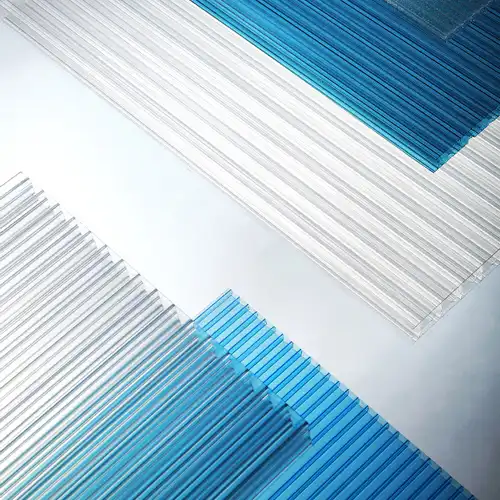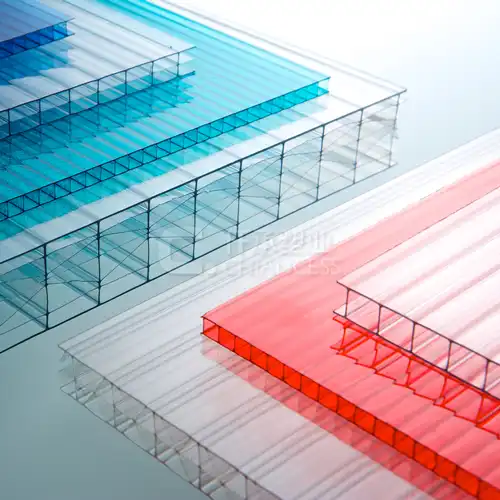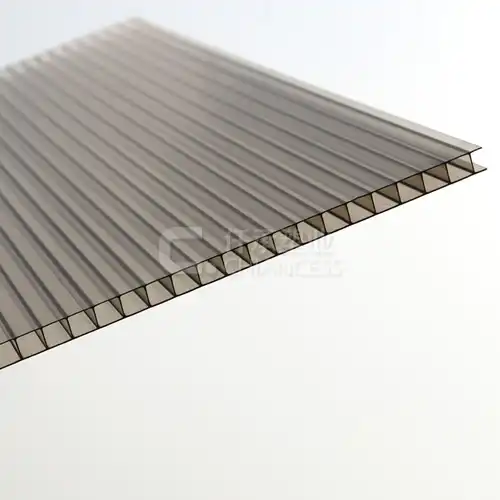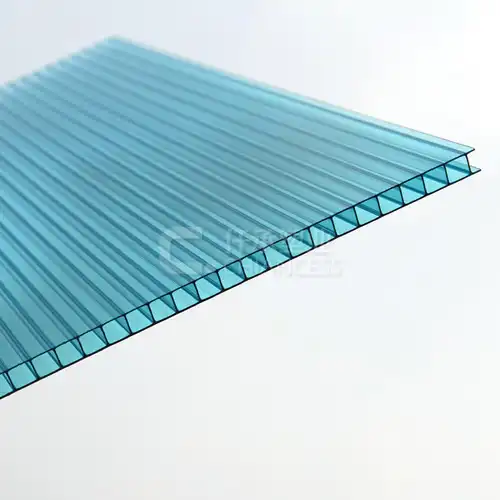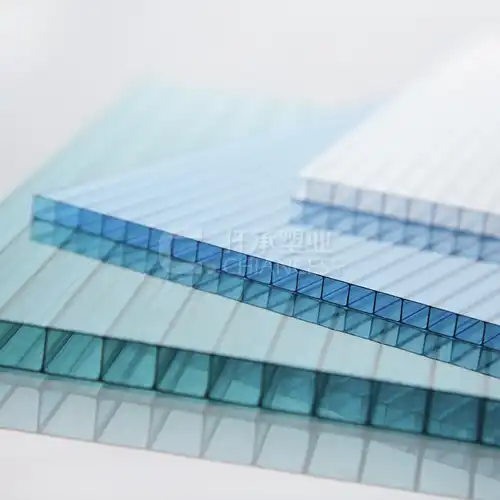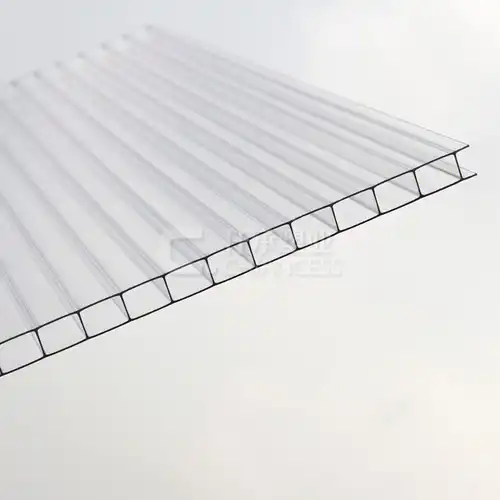August 2, 2024
The durability, longevity, and flexibility of polycarbonate sheets render them desirable for an extensive selection of purposes. Is UV radiation adequately prevented by polyamide sheets? This is one of the most frequently addressed subjects about materials. We will go into plenty of detail about this issue in this blog post, including the uses for polycarbonate sheets, their UV protection traits, and factors to take into consideration while purchasing them.
What is UV Protection in Polycarbonate Sheets?
If we refer to UV protection in polycarbonate sheets, we are speaking about the material's ability to either block or collect ultraviolet (UV) rays, which is an aspect of sunshine that can harm both individuals and materials. Prolonged contact with ultraviolet (UV) radiation among individuals can cause skin cancer, cataracts, and premature maturing. In materials, UV radiation can cause degradation, discoloration, and weakening.
UV-blocking polycarbonate sheets can be manufactured with specific additives that provide UV protection. These additives absorb or reflect UV radiation, preventing it from penetrating and damaging the material. The fraction of solar radiation that the material may reflect or incorporate is frequently utilized to figure out the degree of ultraviolet (UV) defense.
UV-protected polycarbonate sheets offer several benefits:
- Increased Durability: UV protection helps to extend the lifespan of polycarbonate sheets by preventing degradation and discoloration caused by UV radiation.
- Protection for Humans and Objects: UV-protected polycarbonate sheets can help protect people and objects from harmful UV radiation. They are commonly used in applications such as greenhouses, skylights, and patio covers.
- Preservation of Appearance: By delaying the loss of color and yellowing caused on by solar radiation, UV protection helps maintain the beauty of polycarbonate panels.
When purchasing polycarbonate sheets for applications where prolonged contact with sunlight is an issue, UV protection is generally an essential characteristic to take into consideration. UV-protected sheets are appropriate for an assortment of purposes since they offer increased longevity, security, and look retention.
How Effective is UV Protection in Polycarbonate Sheets?
Polycarbonate sheets are available in different grades of UV protection, depending on the application and environmental factors. Understanding the effectiveness of UV protection in these sheets is crucial for selecting the right product for your needs.
2.1.UV Blocking Capabilities
UV-coated polycarbonate panels are inherently UV-resistant due to the chemical structure of the material. They can effectively block UV radiation, depending on their thickness and the specific additives used in their manufacturing process.
The UV protection is typically achieved through one of two methods:
- Co-Extrusion: In this process, a UV-resistant layer is co-extruded with the polycarbonate sheet during manufacturing. This layer provides enhanced UV protection and ensures long-lasting performance.
- UV-Resistant Coating: Alternatively, a UV-resistant coating can be applied to one or both sides of the polycarbonate sheet. This coating acts as a barrier, reflecting or absorbing UV radiation and preventing it from penetrating the sheet.
The thickness of the polycarbonate sheet also plays a role in its UV blocking capabilities. Thicker sheets generally provide better UV protection than thinner sheets.
Overall, polycarbonate sheets offer excellent UV protection, making them suitable for a wide range of applications where shielding from ultraviolet radiation is crucial. The choice of manufacturing method and sheet thickness will depend on the specific requirements of the application.
2.2.Types of UV Protection
There are generally two types of UV protection available in UV polycarbonate sheets:
UV Absorption: Some polycarbonate sheets absorb UV radiation, converting it into harmless heat. This absorption process prevents the UV rays from passing through the sheet and damaging the materials or plants underneath.
UV Reflection: Other polycarbonate sheets reflect UV radiation away from the surface, preventing it from passing through. This reflection process is particularly useful in reducing heat buildup and maintaining cooler temperatures indoors.
Applications of UV-Protected Polycarbonate Sheets
UV-protected polycarbonate sheets are used in a wide range of applications where exposure to sunlight is a concern. Here are some common uses:
3.1.Greenhouses and Nurseries
In agriculture, UV-protected polycarbonate sheets are used in greenhouse construction. These sheets provide the optimal balance of light transmission and UV protection necessary for plant growth. They protect delicate plants from harmful UV rays while allowing sufficient sunlight for photosynthesis.
3.2.Architectural Glazing
In architecture, UV-resistant polycarbonate sheets are used for skylights, canopies, and atriums. These sheets allow natural light to enter the building while protecting occupants and interior furnishings from UV radiation. They also help in reducing the cooling load by blocking a significant portion of solar heat gain.
3.3.Industrial Roofing
For industrial buildings, UV-protected polycarbonate sheets are used for roofing and cladding. These sheets provide durable, lightweight solutions with excellent impact resistance and UV protection. They help in maintaining a comfortable working environment by reducing heat transmission and glare.
Conclusion
To sum up, polycarbonate sheets provide excellent UV protection, which makes them suitable for an array of tasks where ultraviolet (UV) filtering is important. Certain paints or materials are employed during the course of manufacturing to supply UV protection, assuring long-term durability and reliability.
It is essential to take the required sun protection into consideration when choosing UV-blocking polycarbonate sheets for your particular endeavor. Multiple variables, like the intended usage, geographical position, and solar exposure, will impact this. Industries like patio umbrellas and greenhouses, for instance, where individuals or objects require to be shielded from dangerous UV radiation, call for an additional level of solar protection.
For more information about UV-protected polycarbonate sheets or to discuss your specific project needs, please contact us at simon@chiancess.com. Technical norms, pricing details, and advice on the most suitable options to meet your needs may all be received by our team of individuals with enjoyment.
References:
Chen, C., & Liu, S. (2019). Advanced Polycarbonate Structures in Architecture. Springer.
Zhang, Q., & Wang, L. (2018). Thermal Performance of Multiwall Polycarbonate Sheets. Journal of Building Materials.
Gu, J., & Li, J. (2019). High Impact Resistance of Multiwall Polycarbonate Sheets. Polymer Engineering and Science.
Johnson, M., & Brown, K. (2017). UV Protection in Polycarbonate Materials. Society of Plastics Engineers.
Lee, Y., & Kim, D. (2018). Lightweight Materials for Architectural Glazing. John Wiley & Sons.
Wang, X., & Wu, Y. (2016). Design and Installation of Polycarbonate Roofing. CRC Press.
Patel, A., & Rao, K. (2019). Application of Multiwall Polycarbonate Sheets in Greenhouse Engineering. Springer Nature.
.webp)
